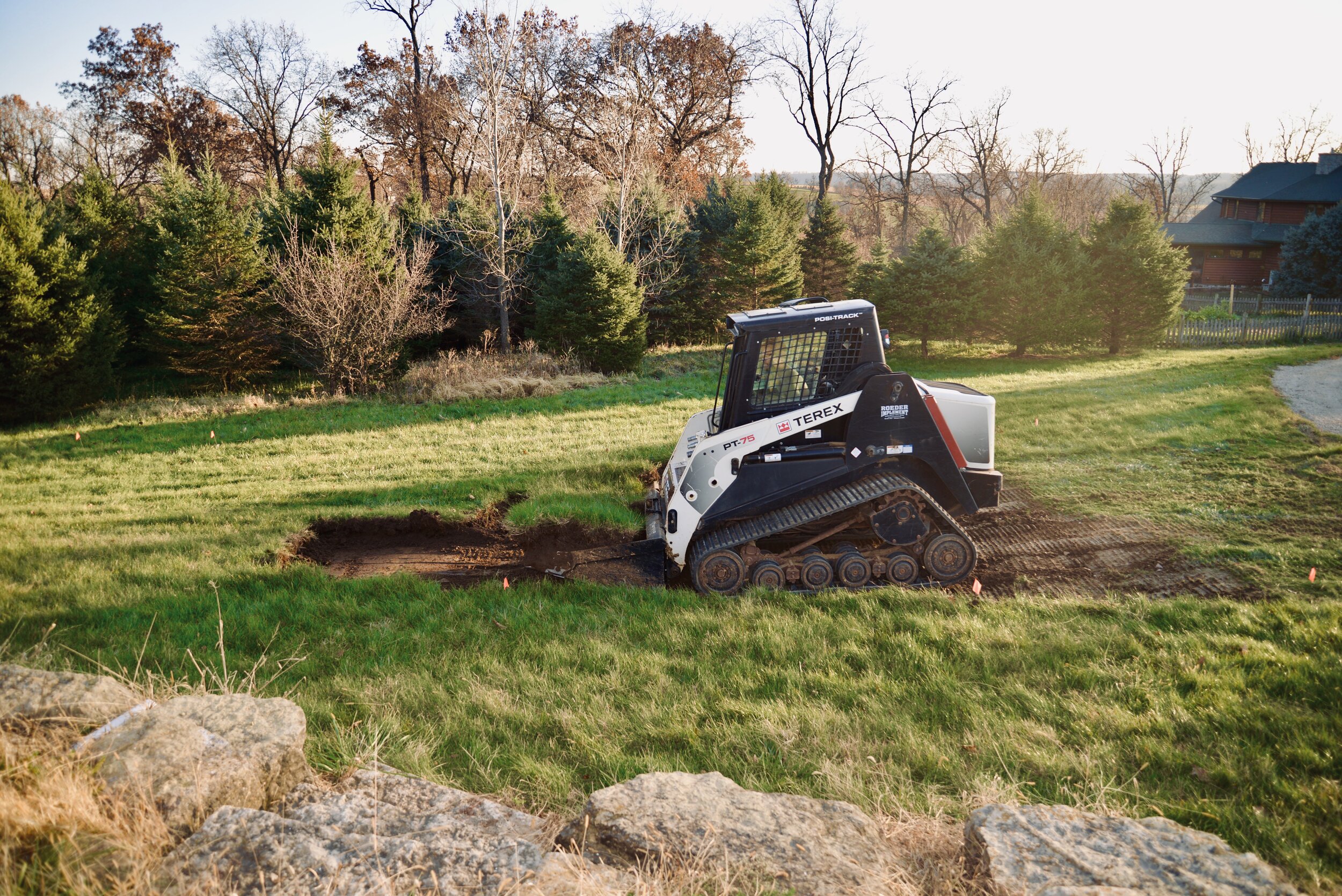High Tunnel Part 1
Patty Grimmer | Co-founder
The most common phrase that our team has used these last two months has easily been, “this is the last warm day we will have this year.” It seems, as farmers in training, that each slight variation in weather is either something to truly marvel at or be concerned of. If there is a warm day, we are grateful to work in t-shirts and we feel guilty if we aren’t making the most of each minute in the sun. If it is a balmy day, a bit of dread washes over us as we realize our time before our first season is rapidly approaching and our long list of to-dos is steadily increasing.
Planning for this high tunnel construction has been one of our first major projects of which its completion makes or breaks our growing plan for the spring. This small high tunnel will be where our seeds germinate and our vegetable starts grow strong enough to do well before transplanting them directly into the ground. And like many of these projects that will eventually happen, the weather strongly dictates our progress and or whether it can be finished before winter comes. Thankfully, our wonderfully patient and wise neighbor had nudged us to get the ball rolling on purchasing and preparing for the high tunnel before the ground freezes. He mentioned that it was a typical rule of thumb that the ground would freeze right around Thanksgiving, giving us approximately three weeks to purchase a high tunnel kit, have it delivered, and get the posts in the ground which was a stretch.
By either sheer luck or because of climate change, we had a very unusually warm November. If we had flat land, the stress of prepping the plot space would not have been as emphasized but our most optimal site had a change in elevation of several feet. With very short notice, we were able to get a skid steer to excavate and level out the plot for our high-tunnel. That day it was 70 degrees and sunny, precisely marking the first use of our “this is the last warm day we will have this year.”
Leveling our plot of land with a skid steer
Jack operating the steer
Ky planning the land
With some other grace of mother earth, we had excavated over 25 tons of sandstone rock which meant that we could source all of the rock needed for the retaining wall from our own site. Not only saving us tons of money, this discovery also relieved the pressure of having to rely on waiting for a delivery of any more large bulk material to further move forward in our construction.
Placing our sandstone rock
Both Jack and Mika’s partner Ollie have had landscaping experience and have helped build retaining walls so they provided us all great guidance for our project. For several days, we had a crew hauling rocks, placing them along the wall, doing a little dance to see if they were stable, and backfilling. Backfill, backfill, backfill. That is what I learned. My forearms learned they were not as strong as they thought.
Patty checking the land levels after the retaining walls were built
With one last week before an anticipated snow, we had several days to finish minor adjustments of our plot in order to get the high tunnel posts in the ground. What we thought was rather level, we came to realize was far from it. With shorts on and shirts off, we hauled Gator loads of dirt to our plot hoping to fill the divots. “This is the last warm day we will have this year,” we continued to say.
We waited until the afternoon so that the ground would have time to warm up before trying to sledge the hammer in the posts to the ground. We lined up the first post where the stake had been temporarily placed into the ground. With the driver nestled into the post, Jack and Ky smacked 26 posts two feet into the ground. More specifically, two feet beyond the three feet of topsoil that was excavated. Once they were into the ground, we used twine and a line level to account for any discrepancies.
Sure enough, at some point we would have to actually have the last warm day of the year. Sixty-five degrees on December 10th for Ky and I’s wedding and then the following day we got more than six inches of snow, and it just kept coming. The high tunnel’s bows that support the polypropylene film and polycarbonate end walls were assembled in the barn with a foot deep blanket of snow. We had to shovel off the snow from our plot before bringing all of the assembled bows out of the barn. We lifted 13 of the constructed bows of galvanized steel and fitted them into the swaged ground posts.
Fitting the first bows of galvanized steel into the snowy land
We again had beautifully warm weather. Not enough to melt away all of the snow, but just enough for our excavated plot to get really muddy and us to once again marvel away about the weather. Our boots became twice the weight and our ladders sunk a couple of inches into the ground. We leveled off all of the wind supports and secured the bows to the ground posts with bracketing. And against the recommendation of the construction booklet, we went ahead and installed 2x4x12’s for the baseboard framing of the high tunnel. We shall see what the repercussion of that decision will be later down the road.
Patty and Ky hoisting the roof
Kelly and Jack securing the roof supports
With our excess mulch that we have acquired, we dumped a load on top of the ground as a hopeful effort to mitigate the clay mud mess that will happen every time the ground thaws. Because we chose not to use landscape fabric to reduce our plastic use, the mulch will also help mitigate weeds.
Freshly placed mulch under the fully constructed steel support system
To finalize construction, we are awaiting for the backordered polycarbonate endwalls to arrive for delivery and for an unusually calm day with no wind to install the film roof and roll-up sides. We are eager to use our new miter saw to cut the remaining steel framing for the sliding doors that we also need to install. Check back in on our next blog post to find out how the rest of this build goes!
Cheers and happy holidays!











